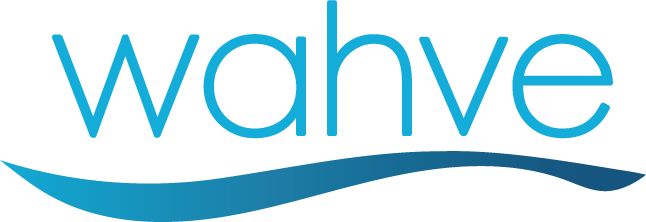Cross-selling and upselling within the insurance industry require far more than product knowledge. Insurance clients are risk-conscious, value-driven, and increasingly selective about whom they trust with their financial well-being. For brokers, advisors, and agencies alike, expanding wallet share depends not only on the quality of products but also on the quality of relationships.
The most successful insurance professionals view cross-selling and upselling not as sales tactics, but as opportunities to deliver more comprehensive protection. When executed with precision, these strategies deepen client trust, increase retention, and improve both coverage adequacy and long-term satisfaction.
The following techniques are designed specifically to help insurance professionals recommend additional products and services in a way that feels helpful—not transactional.
1. Identify Coverage Gaps Using Client Data
Insurance clients expect their advisor to have a deep understanding of their current policy portfolio, risk exposure, and future needs. Use policy reviews, claim history, and life events to identify potential coverage gaps. Then, position new policies as necessary protections—not optional extras.
For instance, a client who recently purchased a new home may need umbrella coverage or mortgage life insurance. A business client who expanded operations may benefit from commercial cyber liability or directors and officers insurance.
When you use concrete data and recent developments as the basis for your recommendation, you shift the conversation from selling to advising.
2. Translate Product Features Into Real-World Risk Protection
Many clients struggle to understand the nuances between policies, endorsements, or coverage tiers. Simply explaining the technical differences between products is not enough. You must connect features to risks they recognize.
For example, when upselling from basic auto coverage to a broader policy with rental reimbursement and roadside assistance, illustrate how this coverage would perform in a multi-vehicle accident or during an out-of-town breakdown.
In commercial contexts, explain how professional liability or E&O insurance protects against reputational damage or regulatory fines—issues that business owners often underestimate until it is too late.
Outcomes-driven communication ensures clients see the relevance, not just the detail.
3. Make Timing and Life Stages Central to Your Approach
Cross-selling works best when it follows life or business transitions. For personal insurance, this includes marriage, parenthood, homeownership, retirement planning, and significant purchases. For business insurance, it may involve expansion, new hires, M&A activity, or regulatory shifts.
Professionals who integrate policy reviews into annual check-ins are far more likely to identify cross-sell opportunities at the right moment. Frame these as milestone updates, not sales calls.
A newly married couple, for instance, may require joint life insurance or a reassessment of their beneficiary designations. A contractor who has taken on larger projects may need higher general liability limits or builder’s risk insurance.
Clients appreciate proactive insights that match their evolving circumstances.
4. Use Digital Tools to Anticipate Needs and Personalize Offers
Insurance technology (insurtech) platforms, CRM systems, and automated policy review tools can all support a more data-informed sales process. These tools can flag coverage gaps, renewal opportunities, and client life changes that might not surface in regular communication.
For example, a system that alerts you when a client’s home policy has not been updated in five years allows you to recommend a replacement cost review, updated riders, or bundling with auto for a discount.
These insights allow for precise, timely conversations that feel highly personalized—eliminating the need for broad, one-size-fits-all pitches.
5. Ask Consultative Questions That Surface Unspoken Risks
Insurance conversations should focus on risk identification, not product promotion. Asking the right questions enables clients to self-discover vulnerabilities, creating natural openings for coverage discussions.
Examples include:
- “How would your business respond financially if your systems were down for three days?”
- “Do you have a plan in place if your primary income earner is unable to work for six months?”
- “Are you aware of the limitations in your current liability coverage?”
These questions reframe cross-selling as protection planning. When clients identify their own exposures, they are more likely to value additional solutions.
6. Make it Easy to Say Yes
Insurance can be perceived as complicated or time-consuming to update. Even when clients recognize the importance of additional coverage, hesitation often stems from perceived administrative burden.
Simplify the process by offering bundled policies, annual review meetings, or side-by-side coverage comparisons. Ensure documentation is clear, and explain how added coverage integrates into their current package.
Where possible, offer flexibility in premium adjustments or payment scheduling to accommodate client cash flow concerns.
The less friction clients face in decision-making, the more likely they are to proceed with confidence.
7. Deliver on Promises and Reinforce Value
The cross-sell or upsell process does not end with the signature. Insurance professionals must follow up to ensure the client has received policy documents, understands what was added, and feels confident in their expanded coverage.
Send a short summary outlining what has changed, why it was recommended, and how it addresses specific risks discussed. Invite questions and offer to review the updates in the next annual check-in.
When clients experience consistent, thoughtful follow-through, they begin to see their advisor as a long-term partner in risk management—not a policy pusher.
Final Thoughts
In the insurance profession, cross-selling and upselling are not simply business growth tactics. They are essential to fulfilling the fiduciary responsibility of protecting clients fully.
When recommendations are based on timing, relevance, and risk insight, they enhance the advisor-client relationship. By focusing on education, personalization, and proactive service, insurance professionals can expand their impact—without ever sounding pushy.

0 Comments